LCN Keynote Presentations
Ethervation: Innovation of and on the Ethernet platform
Dr. Robert Metcalfe
Cockrell School of EngineeringThe University of Texas at Austin
Austin, Texas, USA
ABSTRACT
Innovation sometimes advances in leaps and bounds when robust "platforms" appear. Ethernet's story going back 42 years involves two robust platforms: CMOS according to Moore's Law and TCP/IP/Ethernet according to, well OK yes, Metcalfe's Law. Ethernet began as a Local Computer Network (later LAN) in 1973. Back then it ran at 2.94Mbps and coaxially connected PCs in a building. Now it runs up to 100Gbps in the LAN, has returned to its Alohanet wireless roots as Wi-Fi, and is moving down to serve the coming Internet of Things. Ethernet platform innovation is paced by semiconductors. But then there are the many innovations that have taken place on top of the evolving Ethernet platform. The TCP/IP/Ethernet Internet has gone web, video, mobile, social, cloud, embedded — from mainframes to minicomputers to workstations to PCs to cellphones to things. Some of this innovation can be attributed to the venerable Ethernet business model, which is based on packet switching, de jure standards (IEEE), owned implementations, fierce competition, interoperability, rapid evolution, backward compatibility, build it and they will come. Ethernet is the answer; what is the question?
ABOUT THE SPEAKER
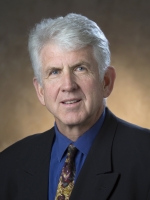 |
Bob Metcalfe is Professor of Innovation and Murchison Fellow of Free Enterprise in The University of Texas at Austin's Cockrell School of Engineering. Dr. Metcalfe was an Internet pioneer at MIT starting in 1970 and in 1973 received his PhD from Harvard for "Packet Communication." He invented Ethernet in 1973 and founded 3Com Corporation (now part of HP) in 1979. Dr. Metcalfe has received numerous industry awards and recognition including the ACM Grace Hopper Award in 1980, the IEEE Alexander Graham Bell Medal in 1988, the IEEE Medal of Honor in 1996, the National Medal of Technology in 2005, induction into to the National Inventors Hall of Fame in 2007, and the Fellow Award from the Computer History Museum in 2008. In November 2010 Metcalfe was selected to lead innovation initiatives at The University of Texas at Austin Cockrell School of Engineering. He began his appointment in January 2011. |
Stormy Clouds - Security in Distributed Cloud Systems
Professor Muriel Médard
Electrical Engineering and Computer Science DepartmentMassachusetts Institute of Technology
Cambridge, Massachsetts, USA
ABSTRACT
As massively distributed storage becomes the norm in cloud networks, they contend with new vulnerabilities imputed by the presence of data in different, possibly untrusted nodes. In this talk, we consider two such types of vulnerabilities. The first one is the risk posed to data stored at nodes that are untrusted. We show that coding alone can be substituted to encryption, with coded portions of data in trusted nodes acting as keys for coded data in untrusted ones. In general, we may interpret keys as representing the size of the list over which an adversary would need to generate guesses in order to recover the plaintext, leading to a natural connection between list decoding and secrecy. Under such a model, we show that algebraic block maximum distance separable (MDS) codes can be constructed so that lists satisfy certain secrecy criteria, which we define to generalize common perfect secrecy and weak secrecy notions. The second type of vulnerability concerns the risk of passwords' being guessed over some nodes storing data, as illustrated by recent cloud attacks. In this domain, the use of guesswork as a metric shows that the dominant effect on vulnerability is not necessarily from a single node, but that it varies in time according to the number of guesses issued. We also introduce the notion of inscrutability, as the growth rate of the average number of probes that an attacker has to make, one at a time, using his best strategy, until he can correctly guess one or more secret strings from multiple randomly chosen strings.
Joint work with Ahmad Beirami, Joao Barros, Robert Calderbank, Mark Christiansen, Ken Duffy, Flavio du Pin Calmon, Luisa Lima, Paulo Oliveira, Stefano Tessaro, Mayank Varia, Tiago Vinhoza, Linda Zeger.
ABOUT THE SPEAKER
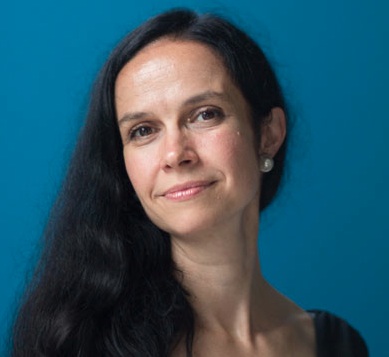 |
Muriel Médard is the Cecil H. Green Professor in the Electrical Engineering and Computer Science Department at MIT and leads the Network Coding and Reliably Communications Group at the Research Laboratory for Electronics at MIT. She has co-founded two companies to commercialize network coding, CodeOn and Steinwurf. She has served as editor for many publications of the Institute of Electrical and Electronics Engineers (IEEE), of which she was elected Fellow, and she is currently Editor in Chief of the IEEE Journal on Selected Areas in Communications. She was President of the IEEE Information Theory Society in 2012, and served on its board of governors for eleven years. She has served as technical program committee co-chair of many of the major conferences in information theory, communications and networking. She received the 2009 IEEE Communication Society and Information Theory Society Joint Paper Award, the 2009 William R. Bennett Prize in the Field of Communications Networking, the 2002 IEEE Leon K. Kirchmayer Prize Paper Award and several conference paper awards. She was co-winner of the MIT 2004 Harold E. Edgerton Faculty Achievement Award. In 2007 she was named a Gilbreth Lecturer by the U.S. National Academy of Engineering. She is among the most highly cited researchers in her field and, as result, was named in 2014 by Thomson Reuters one of the World's Most Influential Scientific Minds. |
LCN Workshop Keynote Presentations
CloudNA Workshop
Data Foundries: The Cauldron of the IoT, Clouds and Datacenters
Dr. Masood Mortazavi
Huawei TechnologiesUS R&D Center
Santa Clara, California, USA
ABSTRACT
The datacenters that form the core engines for transporting, persisting and transforming data are not merely the major building blocks of the "Cloud." They are more akin to "alchemical" data foundries that transform raw bits of data to the gold of information, content and the derived knowledge services that we have come to expect and desire so voraciously. These services help extend our minds and our cognitive powers so we can construct and live in "smarter" learning and living environments. Societies that learn and live smarter will advance faster to give higher meaning to human life and endeavours.
How did these data foundries come into being? What forces gave rise to them? What special problems do they solve? Why are they necessary? What are the limits and challenges they face? How will science, technology and other human institutions color the advance of the datacenters, and will be colored by them? Studying possible answers to these questions and exploring possible future scenarios will help us see what lies around the corner from where we are today.
The challenges of networking, data storage, computing and power efficiency and effective user interface remain core to the design of data foundries. Other challenges which are much harder to comprehend and resolve have to do with the interaction of these new technologies with social and economic realities. Advances are required in a multitude of dimensions to produce next-generation datacenter systems and architectures..
ABOUT THE SPEAKER
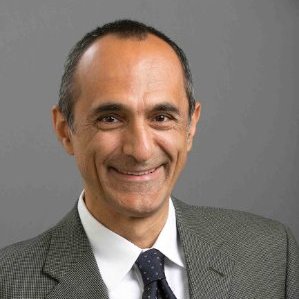 |
Dr. Masood Mortazavi is a distinguished engineer and the senior director of IT Research Department at Huawei Technologies, US R&D Center. Earlier, Masood was senior principle architect at Yahoo's Cloud Infrastructure Group. He led multiple advanced projects related to automatic elasticity systems, cloud services architecture, automatic and adaptive controllers for scalability of infrastructure services, multi-petabyte distributed databases, structured and unstructured storage, scalable messaging and application container services. He has published and spoken internationally on NoSQL databases, multi-tenancy, big data and privacy. Masood led an international group of engineers at Sun Microsystems, focused on the development of open-source software, including databases such as Apache Derby, PostgreSQL and MySQL. At Huawei's Innovation Center in Santa Clara, Masood leads a team of researchers focused on next-generation data centers, distributed systems, databases, file systems and digital archives. |
ON-MOVE Workshop
Security and Privacy Considerations in Vehicular Communications for Smart Grid Applications
Dr. Kemal Akkaya
Associate ProfessorDepartment of Electrical and Computer Engineering
Florida International University
Miami, Florida, USA
ABSTRACT
Plug-in Electric Vehicles (PEVs) have recently received increasing popularity to promote adoption of intermittent renewable energy sources by acting as energy storage systems. In this way, PEVs can inject power to the Smart Grid during periods of reduced production to balance demand. The US Department of Energy expects that about one million PEVs will be on the roads by the end of 2016. These PEVs will typically be equipped with wireless communication capabilities (e.g., DSRC or LTE) to coordinate charging and injection among themselves and the Smart Grid. Such communication, however, exposes information such as the PEVs' locations, their parking duration, the battery status, etc. which can be misused. Long-term analysis of schedule and location information may expose user's driving patterns and whereabouts that can be used by marketers. In addition, the coordinated charging system needs to securely bill the drivers for their payments which necessitates the design of secure protocols. This talk will first focus on the privacy and security aspects of vehicle-to-grid (V2G) and vehicle-to-vehicle (V2V) communications in general. In particular, privacy, authentication and confidentiality challenges will be discussed. We will then present a framework for privacy-preserving power injection protocol for the PEVs that sell power to the grid. The talk will conclude with the future issues in V2G and V2V communications.
ABOUT THE SPEAKER
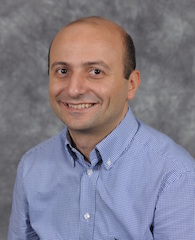 |
Dr. Kemal Akkaya is an associate professor in the Department of Electrical and Computer Engineering at Florida International University. He received his PhD in Computer Science from University of Maryland Baltimore County in 2005 and joined the department of Computer Science at Southern Illinois University (SIU) as an assistant professor. Dr. Akkaya was an associate professor at SIU from 2011 to 2014. He was also a visiting professor at The George Washington University in Fall 2013. Dr. Akkaya leads the Advanced Wireless and Security Lab (ADWISE) in the ECE Dept. His current research interests include security and privacy, energy aware routing, topology control, and quality of service issues in a variety of wireless networks such as sensor networks, multimedia sensor networks, smart-grid communication networks and vehicular networks. Dr. Akkaya is a senior member of IEEE. He is the area editor of Elsevier Ad Hoc Network Journal and serves on the editorial board of IEEE Communication Surveys and Tutorials. He has served as the guest editor for Journal of High Speed Networks, Computer Communications Journal, Elsevier Ad Hoc Networks Journal, and in the TPC of many leading wireless networking conferences including IEEE ICC, Globecom, LCN and WCNC. He has published over 100 papers in peer reviewed journal and conferences. He received the "Top Cited" article award from Elsevier in 2010. |
P2MNET Workshop
Multi connectivity and energy efficiency in future 5G ultra dense deployment scenarios
Dr. Karl Andersson
Associate ProfessorPervasive and Mobile Computing
Luleå University of Technology, SWEDEN
ABSTRACT
In upcoming 5G networks, ultra dense deployment (UDN) is a scenario where the base stations are extremely dense in an area and enables extreme capacity per area ideally. Multi-connectivity is a way for connecting to several base stations at the same time both for performance and robustness reasons and enables to direct traffic to certain base stations and enable some sort of sleep mode for non used base stations. This enables energy efficiency in networks. The keynote addresses suitable smart energy efficiency algorithms that still enables robustness.
ABOUT THE SPEAKER
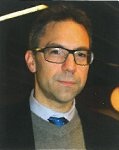 |
After graduating with a PhD degree in Mobile Systems from Luleå University of Technology, Sweden in 2010 and serving as a postdoctoral researcher at Columbia University, New York and National Institute of Information and Communications Technology (NICT), Tokyo, Japan, Karl Andersson is Associate Professor of Pervasive and Mobile Computing at Luleå University of Technology, Sweden. His research interests include mobility management, heterogeneous wireless networks, and access network selection among other related areas. He is a senior member of the IEEE (S'06, M'10, SM'11) and a member of the ACM and serves as a member of the organisation committee of IEEE LCN since 2014. He is serving on a number of TPCs and the editorial boards of Journal of Wireless Mobile Networks, Ubiquitous Computing, and Dependable Applications as well as Journal of Internet Services and Information Security. |
SenseApp Workshop
Practical Issues in Building Smart Home Applications
Professor Kamin Whitehouse
Commonwealth Associate ProfessorComputer Science Department
University of Virginia
Charlottesville, Virginia, USA
ABSTRACT
Homes are rich with information about people’s health, energy consumption, and personal or family functions. This talk will discuss the practical challenges of deploying large-scale smart home applications. The talk will draw on experiences deploying over 2000 devices in over 60 homes and will highlight a phase transition where deployments become dramatically more difficult as they scale up in terms of 1) the number of nodes, 2) the length of time, and 3) the number of houses. The talk will distill these experiences down to a set of guidelines and design principles to help future deployments avoid the potential pitfalls of large-scale sensing in homes, and conclude with open questions and challenges that we still face today.
ABOUT THE SPEAKER
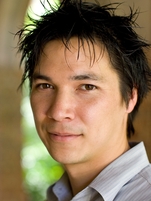 |
Kamin Whitehouse is Commonwealth Associate Professor in the University of Virginia's Computer Science Department. Dr. Whitehouse works in the areas of wireless embedded systems with a current focus on intelligent buildings. Highlights from this work include learning thermostats, improved water heating, and non-intrusive occupant tracking in the home. Prior projects have spanned the areas of embedded systems, networking, and distributed systems. The technologies created by these projects have been downloaded 50,000+ times, have been used by over half a dozen companies to create new products, and are currently running in millions of embedded devices around the world. Prof. Whitehouse is a Siebel scholar and was awarded NSF CAREER award for his work. He is an associate editor for ACM Transactions on Sensor Networks and serves on the steering committee for ACM SenSys and ACM BuildSys. He is a past TPC chair for ACM BuildSys, ACM SenSys, ACM/IEEE IPSN, and EWSN. He has been teaching in the Computer Science Department at the University of Virginia since 2006. He earned his BA and BS from Rutgers University in 1999 and his MS and PhD from UC Berkeley in 2002 and 2006, respectively. |
WLN Workshop
Carrots and Sticks - Incentives that Make Mobile Crowdsensing Work
Prof. Salil Kanhere
Associate ProfessorSchool of Computer Science and Engineering
The University of New South Wales
Sydney, AUSTRALIA
ABSTRACT
Crowdsourcing offers a cost-effective approach to distributed problem solving and data collection by soliciting contributions (solutions, ideas, data, etc.) from a large group of people. Recently, due to the burgeoning smartphone industry and the surging demand for sensing data, a new mobile computing and sensing paradigm called mobile crowdsensing has emerged. It collects data through crowdsourcing and has created significant momentum in both industry and academia. Key to the viability of mobile crowdsensing is providing incentives to attain a sufficient level of user participation. This talk will present a primer on designing incentive mechanisms for ensuring successful crowdsourcing campaigns. In the first part, we take a socio-economic approach to connect participants into a social network via a relationship called endorsement, which is overlaid by economic incentives. The (dual) objective is to incentivize trustworthy crowdsensing. Next we focus on heterogeneous crowdsourcing, where not only the player types (abilities, costs) but also the beliefs about their respective types are different. We cast the problem as an asymmetric all-pay contest and use a series of reward functions to achieve optimal mechanism design. Finally, we propose to use Tullock contents as an alternative framework to design incentive mechanisms for crowdsourcing. We explore a new dimension of optimal Tullock contents design by provisioning the prize as a function.
ABOUT THE SPEAKER
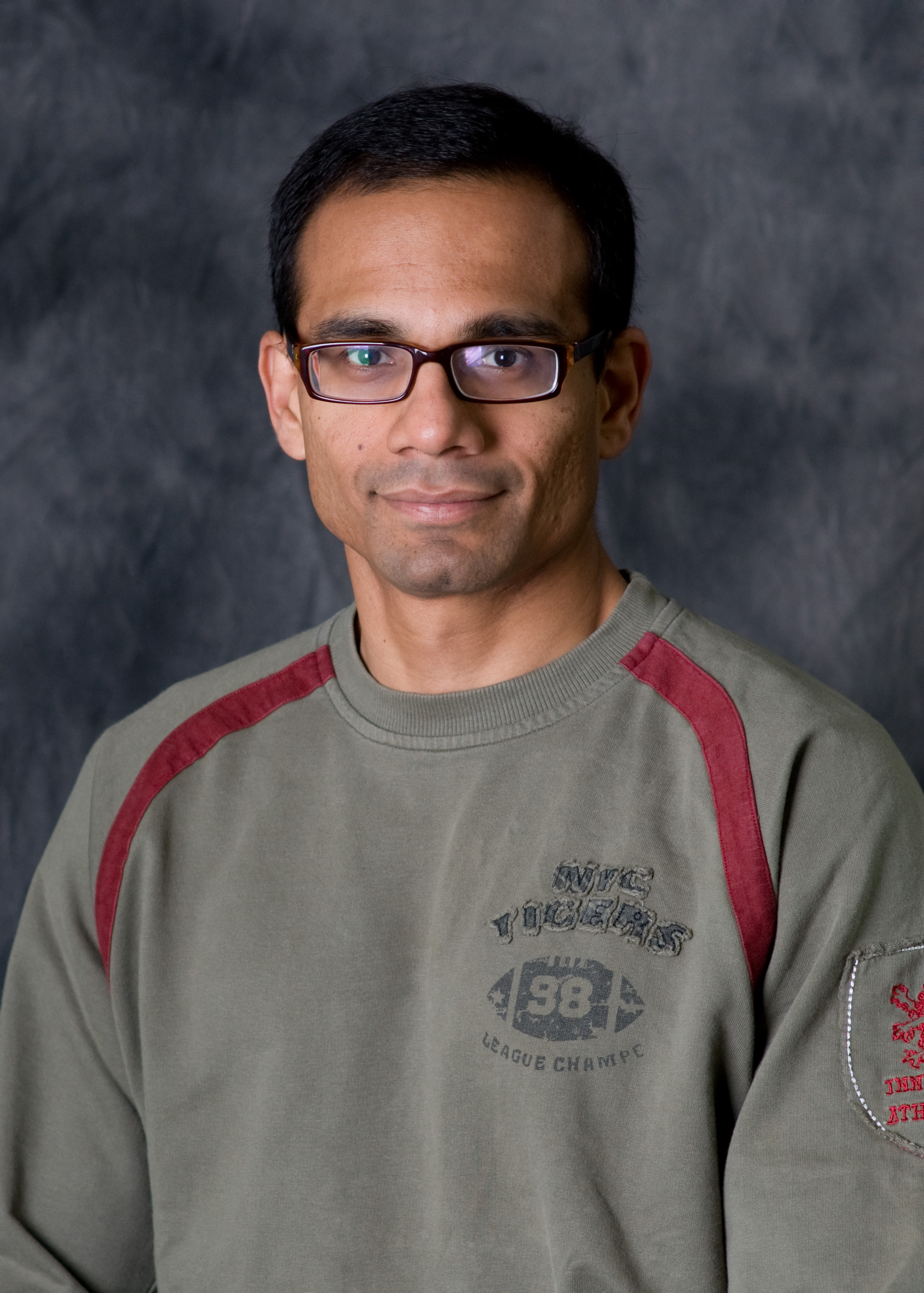 |
Dr. Salil Kanhere received his M.S. and Ph.D. degrees, both in Electrical Engineering from Drexel University, Philadelphia in 2001 and 2003, respectively. He is currently an Associate Professor in the School of Computer Science and Engineering at the University of New South Wales in Sydney, Australia. His current research interests include pervasive computing, crowdsourcing, embedded sensor networks, mobile networking, privacy and security. He has published over 140 peer-reviewed articles and delivered over 15 tutorials and keynote talks on these research topics. He is a contributing research staff at National ICT Australia and a faculty associate at Institute for Infocomm Research, Singapore. Salil regularly serves on the organising committee of a number of IEEE and ACM international conferences (e.g, IEEE PerCom, ACM MobiSys, ACM SenSys, ACM CoNext, IEEE WoWMoM, IEEE LCN, ACM MSWiM, IEEE DCOSS, IEEE SenseApp, ICDCN, ISSNIP). He currently serves as the Area Editor for Pervasive and Mobile Computing, Computer Communications, International Journal of Ad Hoc and Ubiquitous Computing and Mobile Information Systems. Salil is a Senior Member of both the IEEE and the ACM. He is a recipient of the Humboldt Research Fellowship in 2014. |
WNM Workshop
Lessons Learned on Analyzing One-Way Network Traffic
Dr. Nur Zincir-Heywood
ProfessorComputer Science
Dalhousie University
Halifax, Nova Scotia, CANADA
ABSTRACT
The rapid growth in size, and complexity of computer systems, and networks make network measurement and monitoring tasks increasingly important, and extremely challenging. The rate at which digital data is accumulated from such systems far exceeds the human ability to make sense of it, i.e., to interpret and attach meaning to it. Major challenges include data volume and diversity, data dependency, and system dynamics. The goal of this talk is to explore some of these challenges in the context of one-way traffic, while presenting research taken to mitigate the impact of these factors using (semi)automatic and intelligent systems.
ABOUT THE SPEAKER
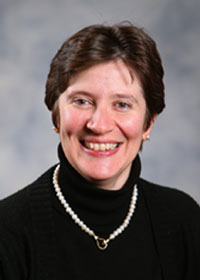 |
Dr. Nur Zincir-Heywood is currently a Professor of Computer Science at Dalhousie University, Canada. She received her PhD in 1998 in Computer Science and Engineering from Ege University, Turkey. Prior to moving to Dalhousie in 2000, Dr. Zincir-Heywood had been a researcher at Sussex University, UK and Karlsruhe University, Germany as well as working as an instructor at the Internet Society Network Management workshops. She has published over 150 papers on networks, security and intelligent systems. She has substantial experience of industrial research in autonomous systems, network management and security related topics with partners such as RUAG, Raytheon, Gtech, Sandvine and Public Safety Canada. She is a member of the IEEE and the ACM. |
